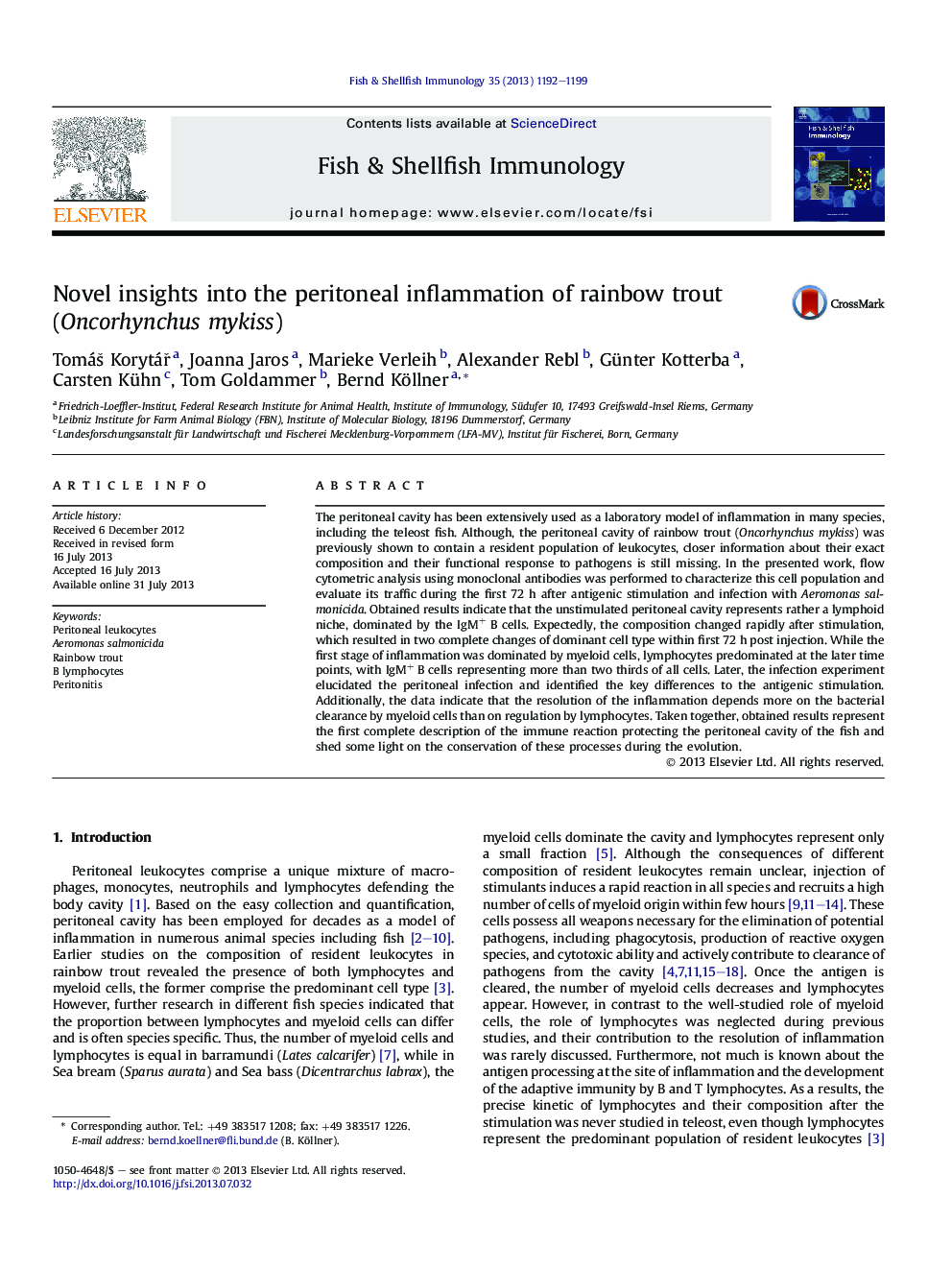| Article ID | Journal | Published Year | Pages | File Type |
|---|---|---|---|---|
| 2431474 | Fish & Shellfish Immunology | 2013 | 8 Pages |
•We analyzed peritoneal resident leukocytes and cell traffic after stimulation or infection.•Unstimulated peritoneal cavity represents a lymphoid niche, dominated by the IgM+ B cells.•Resolution of the inflammation depends on the bacterial clearance by myeloid cells.•First description of cellular immune reaction protecting the peritoneal cavity.
The peritoneal cavity has been extensively used as a laboratory model of inflammation in many species, including the teleost fish. Although, the peritoneal cavity of rainbow trout (Oncorhynchus mykiss) was previously shown to contain a resident population of leukocytes, closer information about their exact composition and their functional response to pathogens is still missing. In the presented work, flow cytometric analysis using monoclonal antibodies was performed to characterize this cell population and evaluate its traffic during the first 72 h after antigenic stimulation and infection with Aeromonas salmonicida. Obtained results indicate that the unstimulated peritoneal cavity represents rather a lymphoid niche, dominated by the IgM+ B cells. Expectedly, the composition changed rapidly after stimulation, which resulted in two complete changes of dominant cell type within first 72 h post injection. While the first stage of inflammation was dominated by myeloid cells, lymphocytes predominated at the later time points, with IgM+ B cells representing more than two thirds of all cells. Later, the infection experiment elucidated the peritoneal infection and identified the key differences to the antigenic stimulation. Additionally, the data indicate that the resolution of the inflammation depends more on the bacterial clearance by myeloid cells than on regulation by lymphocytes. Taken together, obtained results represent the first complete description of the immune reaction protecting the peritoneal cavity of the fish and shed some light on the conservation of these processes during the evolution.
